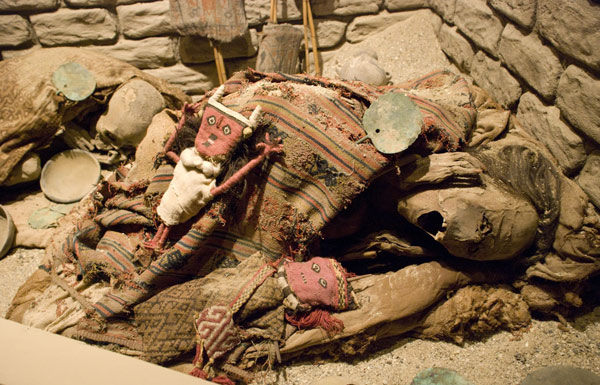Introduction
High in the Andes Mountains lies an ancient burial site known as Tenahaha, gradually revealing its secrets buried for over a millennium. With thousands of fragmented mummies, enigmatic rituals, and complex relationships between death and community life, this is one of the most astonishing archaeological discoveries in South America. This article delves into the historical, cultural, and religious significance behind this unique cemetery.

Tenahaha – A Land of the Dead and Communal Coexistence
History and Location
Situated in the Cotahuasi Valley in southern Peru, Tenahaha is estimated to be around 1,200 years old, dating back to the Middle Horizon period well before the rise of the Inca Empire. Excavated between 2004 and 2007 by an international team led by Justin Jennings from the Royal Ontario Museum (Canada), Tenahaha exhibits characteristics that distinguish it from typical burial grounds.
Thousands of Mummies and Unusual Burial Practices
Body Position and Preservation Techniques
The mummies at Tenahaha were buried in a seated position, with arms folded over the chest and legs drawn up with knees touching the shoulders, a common pose in Andean cultures symbolizing returning to the womb, representing rebirth and the cycle of life.
The bodies were usually wrapped in multiple layers of cloth, tied with rope, and placed in shallow tombs or rocky niches. Strikingly, the mummies spanned a wide range of ages, from fetuses and infants stored in jars to fully grown adults, suggesting that the site was not reserved for any specific age or social class.
Analysis of the Fragmented Remains
One of the most puzzling features is the discovery of highly fragmented human remains, including hands, feet, skulls, and teeth scattered across different graves. In one tomb alone, archaeologists uncovered up to 400 separate body parts.
There are two main theories.
Natural causes include rodents, groundwater, and harsh environmental conditions that may have damaged the bodies.
Deliberate ritual practice suggests the movement and redistribution of remains across burial areas hint at complex mortuary customs, possibly tied to notions of “social resurrection” or ancestor community bonding.
Tenahaha as a Ritual and Communal Hub
Beyond burial structures, researchers found storage facilities, communal kitchens, and gathering spaces, indicating that this was not just a place of the dead but a center for communal feasting and ritual activity, an unusual feature in Middle Horizon Andean archaeology.
These communal events likely served as means of reconciliation and social cohesion. In an environment where neighboring villages often clashed over land and power, Tenahaha may have served as a neutral ground, a sacred place where people gathered in peace.
Cultural and Religious Interpretation
Beliefs in Rebirth and Ancestor Connection
The burial posture and the purposeful redistribution of remains reflect a deep belief in the continuity of life beyond death and the spiritual bond between the living and the deceased. Researchers suggest that actions such as gathering remains together or keeping them separated with earth layers represent ritual expressions tied to the soul and collective memory.
Conclusion: A Cultural Legacy Awaiting Further Decoding
Tenahaha is not merely an archaeological site but a gateway into an ancient worldview, where death was not an end but a stage in the cycle of rebirth and communal connection. While many questions remain unanswered, this discovery helps us better understand ritual death practices, ancestor worship, and how ancient societies structured order through sacred traditions.
“Tenahaha stands as evidence of a culture that embraced death as a vital part of life—where memory, ritual, and community existed in harmony.” – Justin Jennings

